44.4K
FPV antennas are crucial in defining the range and signal strength of your FPV system. With the market flooded with various antenna options, selecting the ideal one for your setup can be daunting. In this comprehensive tutorial, we delve into the fundamental aspects of antenna structures, explore the different types available, and offer guidance on selecting the perfect antenna. Whether you’re new to FPV flying or an experienced pilot, this guide will provide valuable insights into the world of FPV antennas to enhance your flying experience.
Antennas Recommendations
These antenna recommendations cater to both analog and digital systems. It’s crucial to select the correct polarization (RHCP or LHCP). Manufacturers or kits often recommend LHCP for DJI and Walksnail. As long as the antennas on both transmitting and receiving ends match, performance remains high regardless of the polarization used. Interested in antennas for the DJI FPV System? Stay tuned for an upcoming detailed guide.
Antennas for VTX (Video Transmitter)
XILO AXII
Budget Option
The Xilo AXII, produced by GetFPV, is an economical FPV antenna with a wide variety of connectors (SMA, RP-SMA, MMCX, and UFL), diverse coaxial cable types (hard and flexible), and polarizations (RHCP and LHCP) to cater to different requirements.
Rush Cherry
Decent Performance
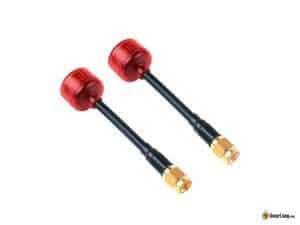
The Rush Cherry stands as a solid budget-friendly antenna. An excellent alternative to the XILO for international buyers, it comes with various connectors and polarization options. Its robust casing ensures protection during crashes.
TrueRC Matchstick
Top of the Line
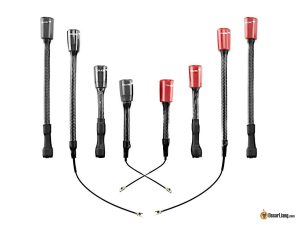
Resembling the Singularity, the Matchstick features a hardened case for augmented durability. With an impressive efficiency of 99% and near-perfect axial ratios, it adeptly rejects multipath interference, enhancing overall performance.
Antennas for VRX and FPV Goggles
VAS Crosshair XTREME Mini
Top of the Line
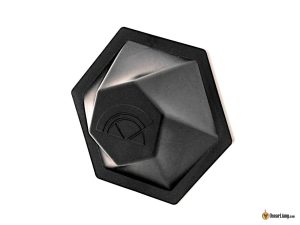
The VAS Crosshair XTREME Mini is a superb directional antenna that maintains a sleek appearance on FPV goggles. With specs akin to the X-Air MKII, it offers better efficiency than patch antennas due to its Crosshair design and excels in rejecting multipath distortion.
What is FPV Antenna?
An FPV antenna is vital for transmitting the video feed from your drone’s camera to the pilot’s display in real-time, enabling immersive drone navigation. The quality, configuration, and performance of these antennas critically affect the range, clarity, and reliability of the video transmission.
FPV Antenna Anatomy
At its core, an antenna is a wire that converts electrical signals into electromagnetic waves, and vice versa. Despite various designs or appearances, all antennas feature essential components:
- Element: The conductive part responsible for receiving and transmitting electromagnetic waves.
- Ground Plane: Attached to the device’s electrical ground, it enhances the radio signal emitted or received.
- Coaxial Cable: Transfers signals between the connector and antenna element, minimizing radio emissions. These are typically rigid and sometimes unnecessary if the connector directly attaches to the element.
- Connector: The physical link between the antenna components and the video transmitter/receiver.
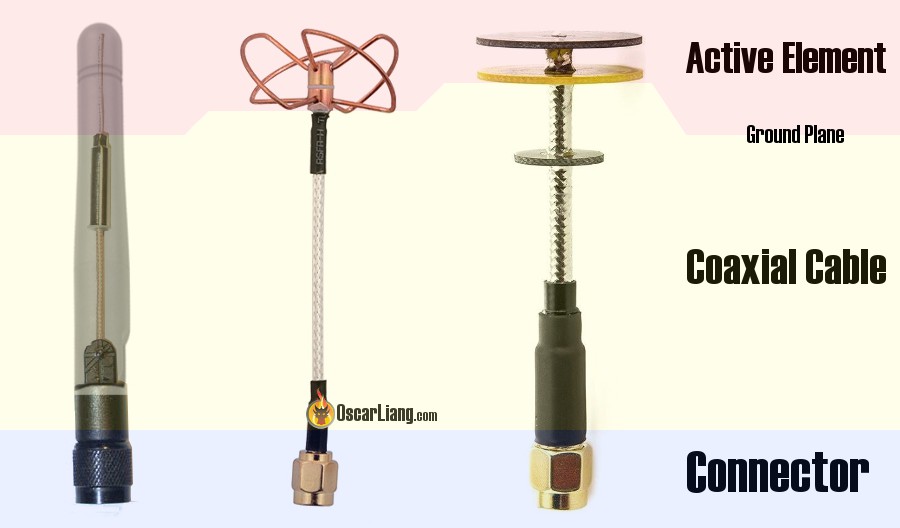
FPV antenna elements are made of delicate copper wires often encased in protective plastic housings, offering resilience in crashes without impacting signal strength.

Antenna Directionality
A basic yet crucial step in choosing an antenna is deciding on its directionality: directional or omni-directional.
Omni-directional antennas distribute radio waves evenly across all directions, whereas directional antennas focus waves towards a specific direction.
A handy analogy compares a bulb (omni-directional) to a torch (directional). Although both emit the same power, a torch’s focused beam travels farther but with a narrower spread.
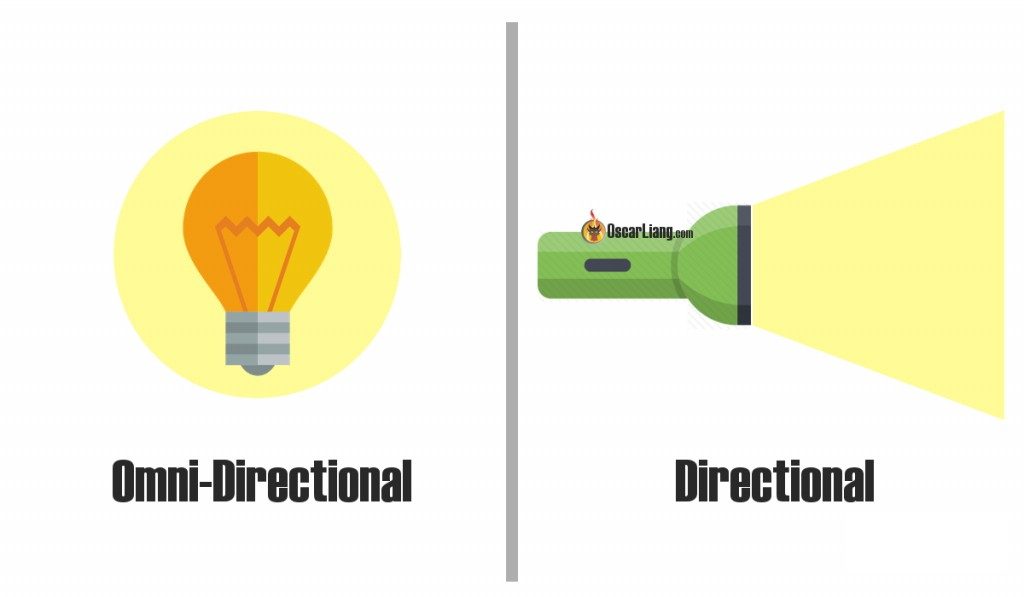
Omni-directional antennas excel in everyday flying, offering excellent coverage. Directional antennas shine in diversity receivers, augmenting coverage when paired with other antennas.
Diversity receivers detect signals from multiple antennas, displaying the strongest one.
Antenna Polarization
Antenna polarization is a significant classification, featuring:
- Linearly polarized antennas (LP)
- Circularly polarized antennas (CP)
Circularly polarized antennas further split into:
- Left-hand circular polarized (LHCP)
- Right-hand circular polarized (RHCP)
Linear Polarization
Linear polarization is prevalent in basic antennas, such as dipole antennas (aka rubber duck antennas) found in various devices, including home WiFi systems.
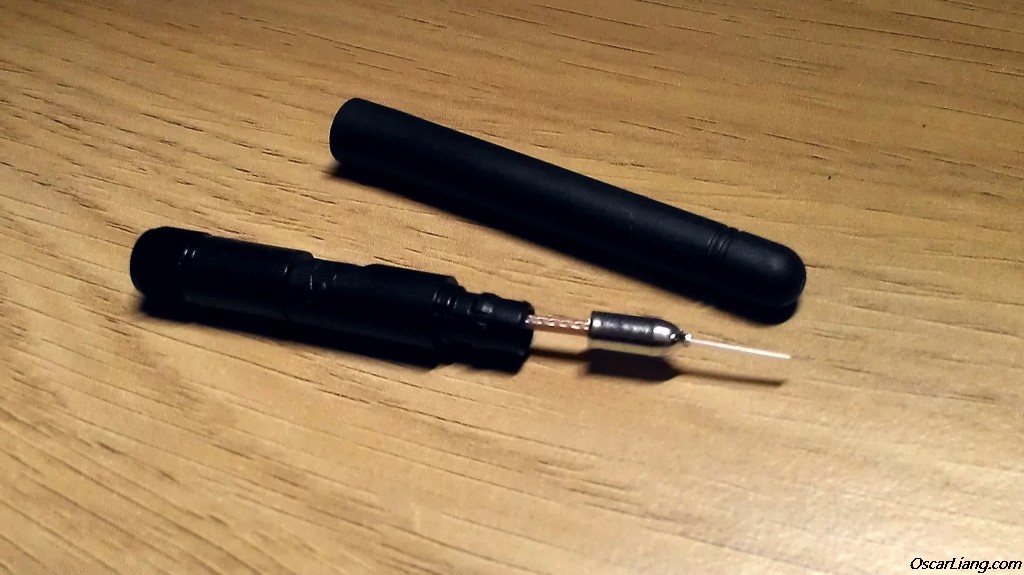
With linear polarization, signals oscillate in either horizontal or vertical planes as they travel.
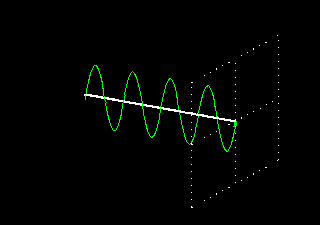
Circular Polarization
Skew-Planar Wheel, Cloverleaf, and helical antennas exemplify circularly polarized antennas, transmitting signals on both horizontal and vertical planes with a spinning corkscrew motion.
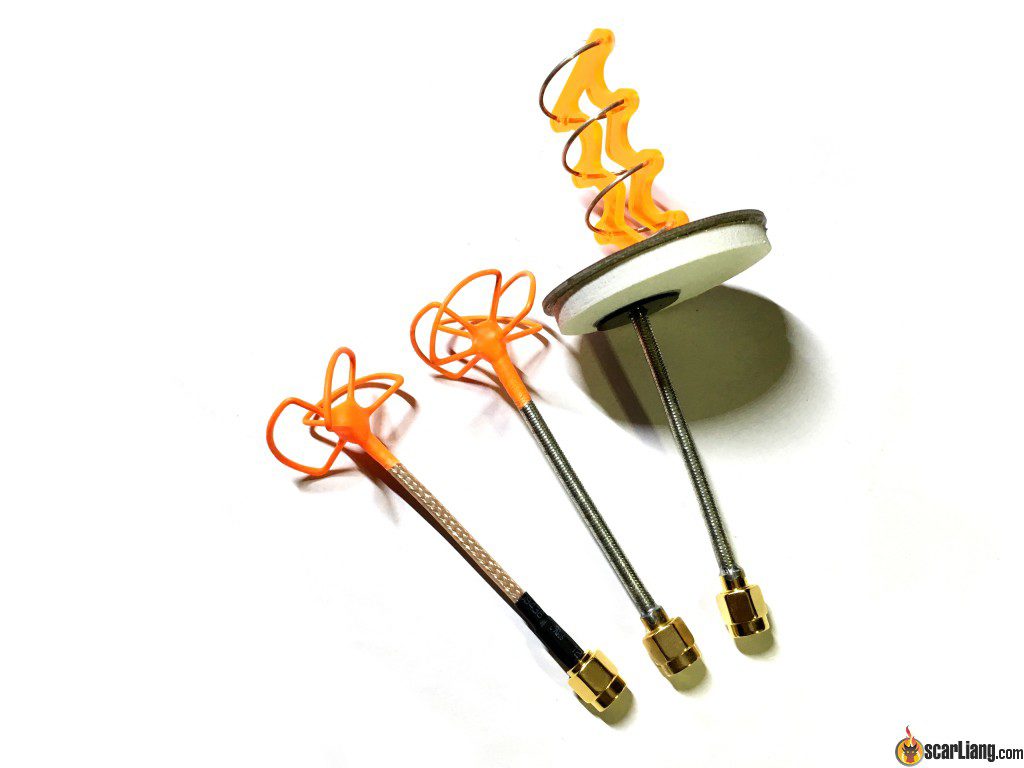
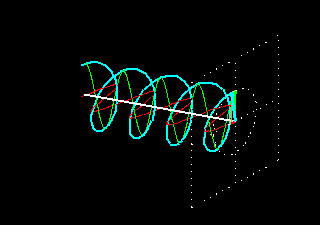
The direction of circular polarization distinguishes its types: right-hand circularly polarized (RHCP) or left-hand circularly polarized (LHCP). Matching the transmitter and receiver antennas’ polarization prevents a significant signal loss. Mixing RHCP and LHCP setups drastically reduces the range due to signal misalignment, known as cross-polarization.
Which Antenna Polarization is Best for FPV Drone?
Circularly polarized antennas suit FPV drones better due to:
- Greater immunity to multipath interference compared to linear polarization antennas.
- They maintain signal quality irrespective of orientation, a significant benefit for constantly rotating quadcopters.
Linear polarized antennas, despite their structural simplicity, are prone to signal degradation due to alignment issues and multipath interference, making them less ideal for FPV drones. They may suit RC planes and vehicles better.
Circular polarized antennas surpass linear ones in overlapping signal, maintaining consistent signal quality irrespective of drone movements. They effectively counteract signal loss from multipath interference by rejecting phase-shifted signals that often cause noise, static, or image scramble.
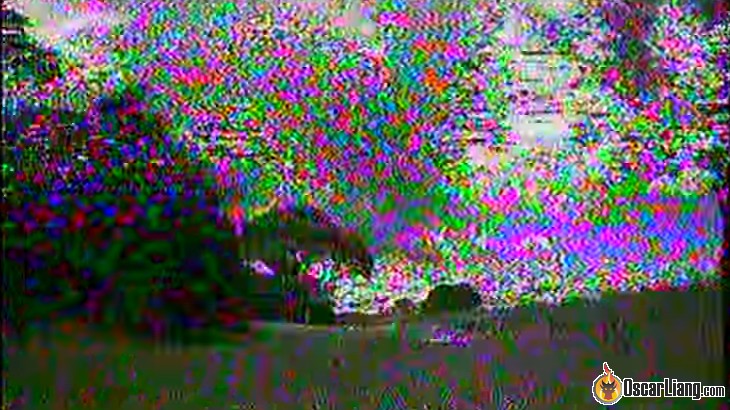
For general FPV drone flying, CP antennas are recommended. However, some pilots might favor LP antennas tailored for minimal size and weight, despite lesser RF performance.
When to use CP antennas
- Flying near large objects with substantial multipathing interference, such as trees and buildings, or in enclosed spaces like car parks.
- During acrobatic flights where orientation and angles fluctuate constantly.
- In low-altitude acclivities known as proximity flying.
When to use LP antennas
- Flying steadily with minimal roll and pitch movement.
- When prioritizing durability, size, and weight above all else in the antenna choice.
Can you use LP and CP antennas together?
While integrating linearly and circularly polarized antennas within an FPV system is possible, it comes with inevitable signal loss. Some racers might opt for dipole antennas on the drone for their lightweight and durability, pairing them with circular antennas on the video receiver, leading to approximately a 3dB (50% power loss) signal diminution. This setup is challenging for long-range flights but manageable for short-range racing, offering a balance of performance and durability.
Differences between LHCP and RHCP
Circularly polarized antennas, available as LHCP or RHCP, must match on both the transmitter and receiver. A mismatch results in significant signal loss, as LHCP rejects RHCP signals and vice versa, contingent on the axial ratio of the antennas.
Utilizing matched polarization antennas exploits their properties against multipathing. When one pilot employs LHCP and another uses RHCP, mutual interference reduces.
Ultimately, using identical antenna types on transmitting and receiving ends ensures optimal signal strength. If LHCP and RHCP antennas are mixed, notable signal loss is inevitable.
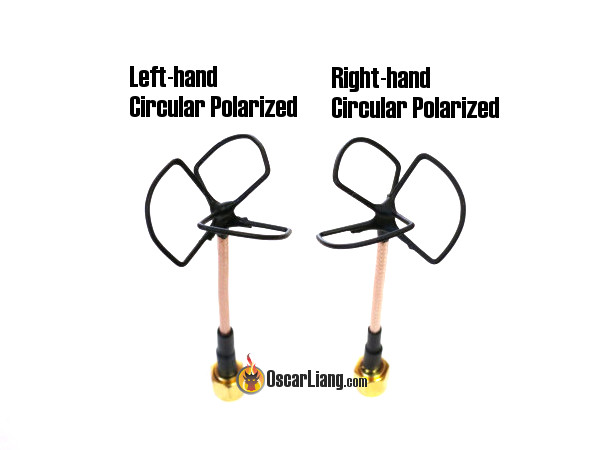
In group flights, having both LHCP and RHCP antennas on hand grants flexibility. For solo flights, performance remains the same between both, with RHCP typically favored for analog systems and LHCP for digital systems like DJI and Avatar.
Antenna Performance
Several key performance measurements factor into FPV antenna design:
- Gain
- Radiation Pattern
- Axial Ratio
- SWR
- Efficiency
- Frequency tuning and range
- Impedance
I prioritize the initial four when picking antennas. When sourcing from trusted brands, there’s no need to steep into intricate details. After all, we are not crafting rockets for NASA!
Antenna Gain
Antenna gain signifies the range and directional coverage of a directional antenna, defined by how much more power an antenna projects in a selected direction compared to an isotropic radiator. Higher gain equates to increased range but narrows the beam width, influencing the radiation pattern displayed on an antenna’s datasheet.
For VTX antennas, opt for low-gain, omni-directional types to ensure exceptional coverage around the drone. For VRX antennas, mixing low-gain omni-directional and mid/high-gain directional options optimizes coverage and range. Avoiding high altitudes directly overhead maintains signal integrity, reducing the risk of signal loss due to weak top-directional gain.
Explore the impact of antenna gain on range further.
Remember: a 3dB gain equals doubling the transmitter’s power. Upgrading from a 3dB to a 6dB antenna with a 200mW transmitter yields similar coverage to an 800mW setup, dramatically extending the operational range.
Radiation Pattern
Every antenna’s radiation pattern is represented through dual charts—one from the top view and another from the side—highlighting potential weak spots.
Consider this 0 dB gain antenna example, showcasing near-ideal omni-directional coverage and a perfectly spherical radiation pattern.
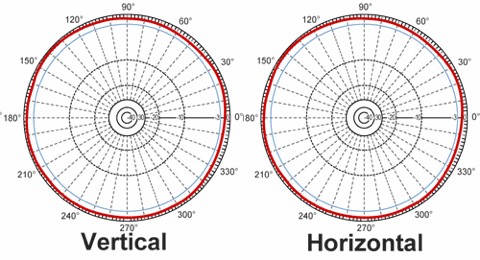
Real-world omni-directional antennas exhibit weak spots at the top and bottom, resembling a doughnut shape in 3D views, with a figure-eight vertical plane pattern and a circular horizontal plane.
Avoid flying directly overhead to prevent losing signals due to weak top-directional gain.
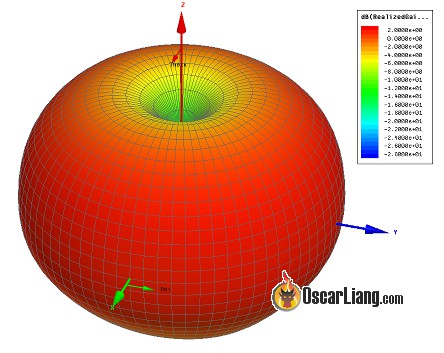
Examine the charts for an 8dB patch antenna, displaying narrower beams in both horizontal and vertical planes.
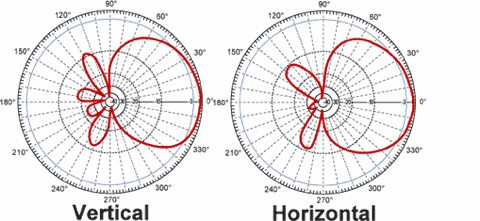
Despite low gain’s limited range appeal, it ensures reliable performance due to the more spherical radiation pattern.
Axial Ratio
In the real world, perfect circular polarization doesn’t exist. For instance, RHCP antennas might emit 90% RHCP signal and 10% LHCP, which can still cause interference even under ideal conditions. Axial ratio is vital, measuring multipath interference susceptibility. Antennas with superior rejection capabilities perform robustly in environments with various obstacles.
Antennas with lower axial ratios closer to 1 better combat multipath interference.
Frequency and Bandwidth
Antennas are designed for specific frequencies or frequency ranges. The tuned frequency, determined by the active element length, influences performance, with peak efficiency at this frequency.
Operating at slight deviations from the tuned frequency still delivers acceptable performance within the antenna’s bandwidth. Outside this range, performance plummets, risking interference and signal degradation.
Excessive mismatches can cause overheating and damage due to reflective power buildup.
Generally, antennas tailored for 5.8GHz should suffice across FPV channels unless contrary specifications dictate otherwise.
SWR
SWR (or VSWR), standing for “(Voltage) Standing Wave Ratio,” quantifies the power reflected back to its source.
A theoretical perfect SWR of 1 indicates zero loss, with full signal transmission through the antenna. However, real-world antennas endure some loss. High-frequency antennas demand intricate construction (e.g., 0.1mm precision), sensitive to building materials, including solder types and plastics. Well-crafted antennas, like the Pagoda, maintain low SWR across numerous settings.
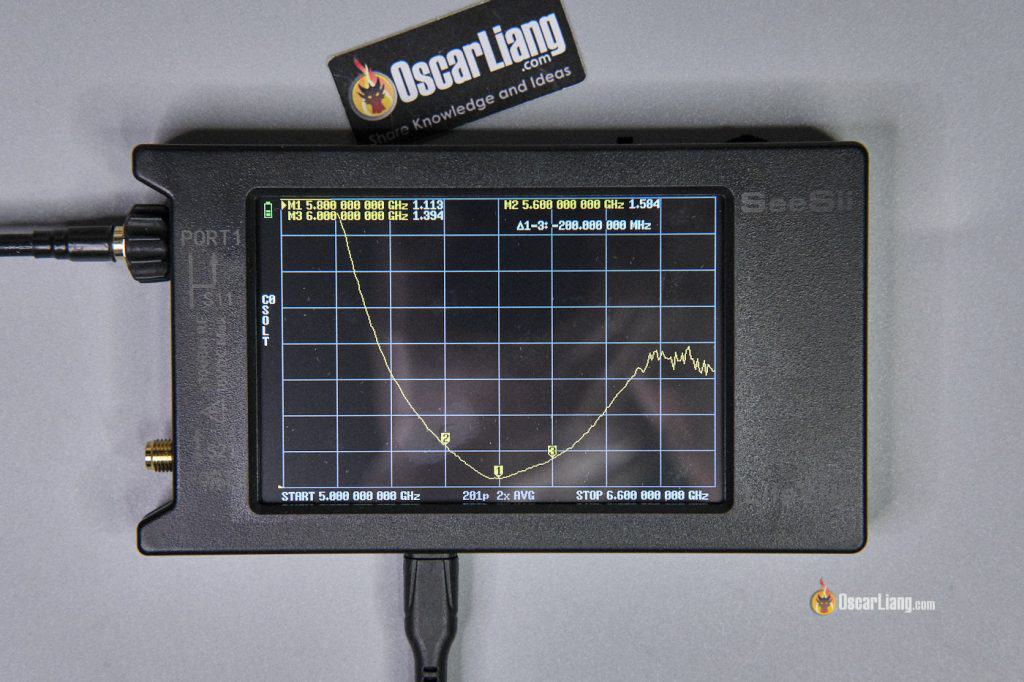
An SWR of 2 reflects around 11% of power, transmitting approximately 89%, making an SWR below 2 adequately performing.
Excessive SWR when transmitting sparks overheating and possible radio damage. When receiving, high SWR may degrade signal reception but remain harmless otherwise.
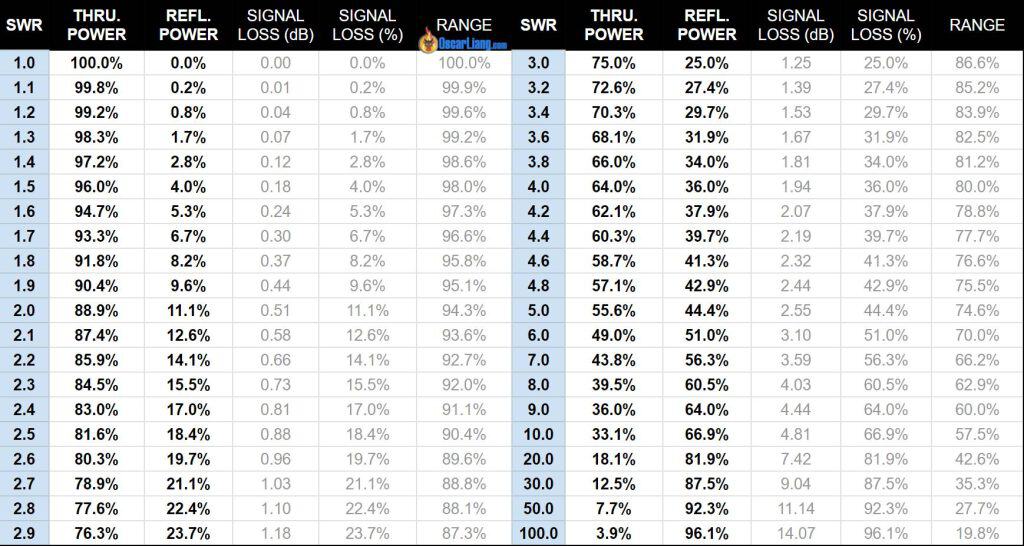
Since FPV is rooted in the 5.8GHz band, SWR evaluation focuses predominantly between 5645MHz (5.645GHz) and 5945MHz (5.945GHz).
While not directly comparing antennas’ superiority, SWR gauges an antenna’s suitability within its intended frequency range, aiding decision-making regarding optimal channel usage.
Antenna Efficiency
Efficiency, paralleling VSWR in importance, indicates how much energy transforms into RF output. It evaluates the proportion of energy that radiates as RF from the power received.
Consider two antennas for 100mW VTX:
- Antenna A: SWR = 1.2:1 (99.2%), radiation efficiency = 80%
- Antenna B: SWR = 2.0:1 (88.9%), radiation efficiency = 90%
Despite Antenna B’s lesser received power, it excels in radiated energy (80.01mW vs. 79.36mW) due to higher efficiency, affirming efficient antennas can outperform those with superior SWR.
Types of Antennas
We explored essential FPV antenna concepts; now, let’s delve into the FPV antenna types commonly used.
| Omni-directional | Directional | |
| Linear Polarization | Monopole, Dipole | Patch |
| Circular Polarization | Cloverleaf, Pagoda | Helical, Patch, Crosshair |
Monopole Antenna
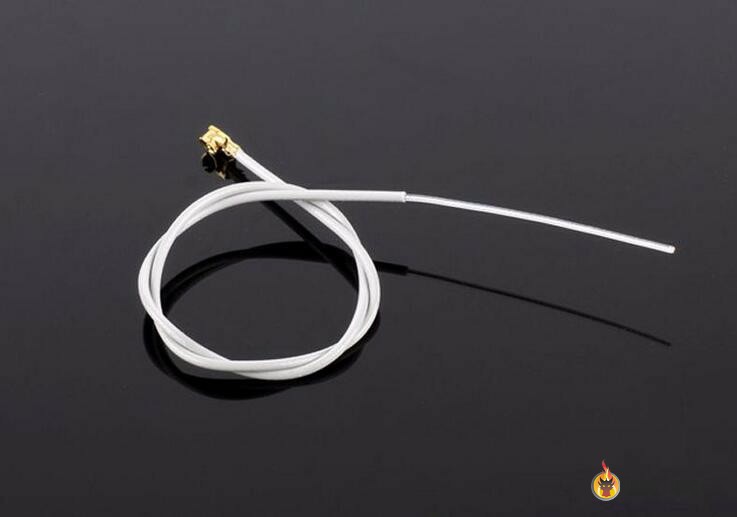
Summary:
- Type: Omni-directional Linear
- Applications: Radio control transmitters and receivers
The monopole antenna, the simplest form, features an unshielded solid wire as the radiating element. Popular in radio receivers due to its low cost and easy repair, it is less effective than dipole antennas. Exposed wire length is critical for resonant frequency determination.
Dipole Antenna

Summary:
- Type: Omni-directional Linear
- Applications: Radio control transmitters and receivers, video transmitters
Many radio and video devices come equipped with dipole antennas known for their lightweight structure and crash-resistant design.
Known as the “rubber duck antenna,” it features two intersecting elements perpendicular to each other, with one acting as the radiating element and the other as a ground plane. This design offers slightly enhanced gain over monopole antennas but at a cost to vertical performance.
Cloverleaf Antennas
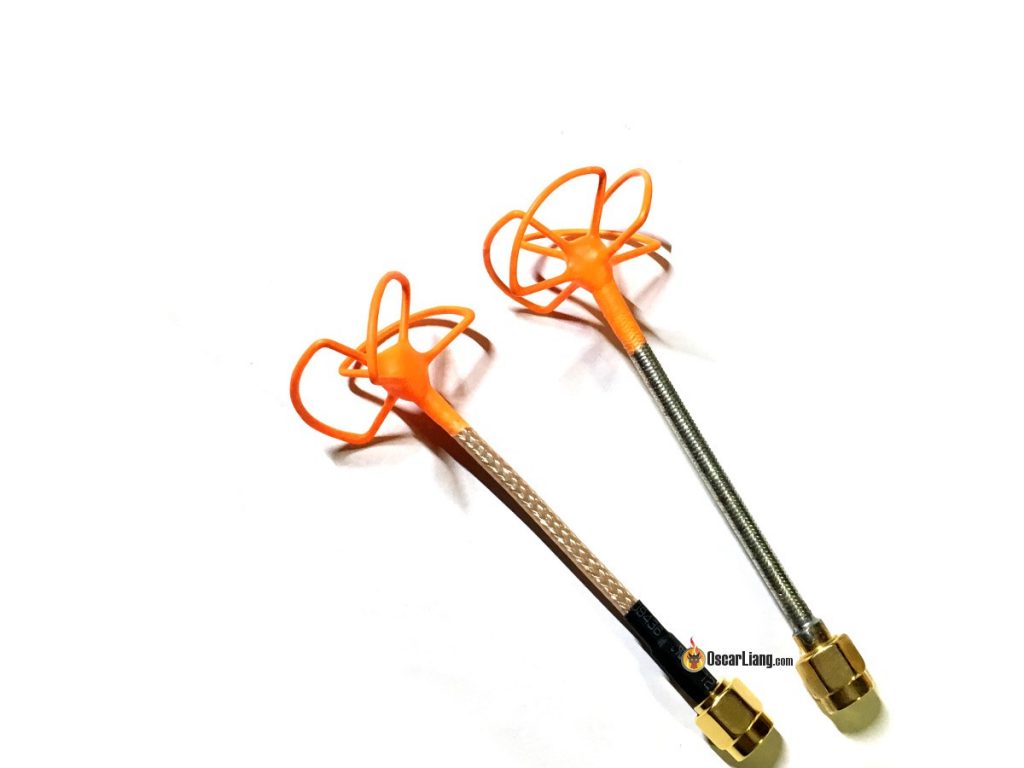
Summary:
- Type: Omni-directional Circular
- Applications: Video transmitter and receiver antennas
Cloverleaf and skew-planar wheel antennas dominate mini quad FPV, offering an omni-directional appeal akin to dipoles. Their circular polarization delivers excellent performance in varied orientations, reducing multipathing for improved quality around obstacles.
Despite being relatively fragile, they come in diverse casings, often resembling mushrooms due to the protective housing.
Pagoda Antenna
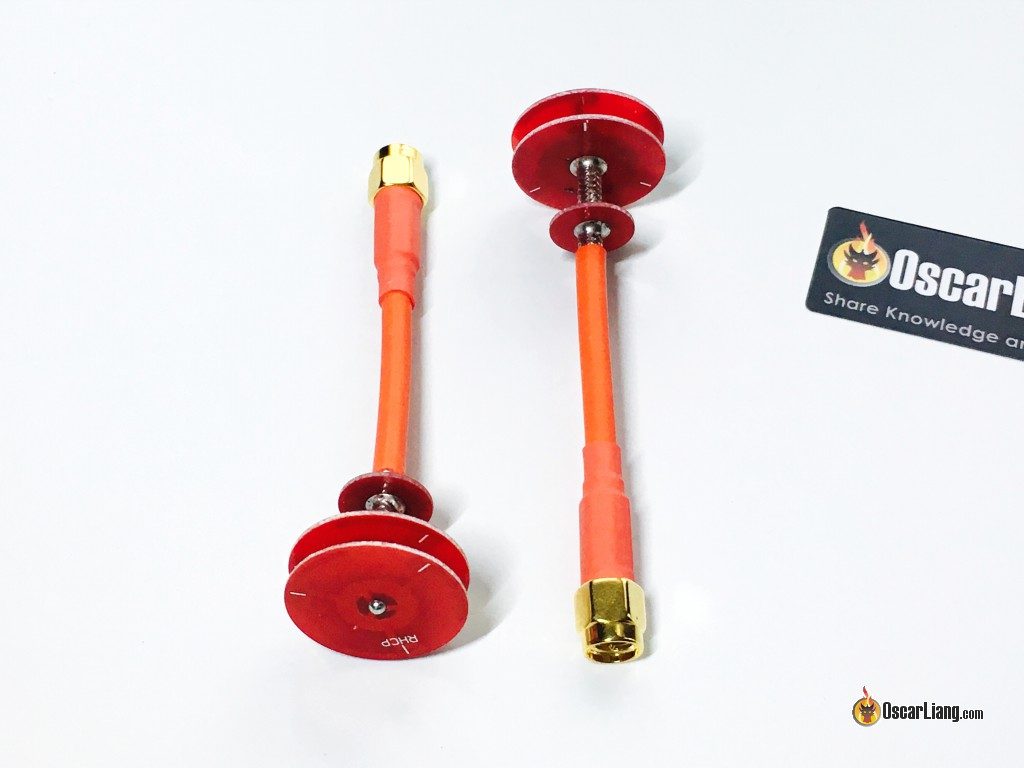
Summary:
- Type: Omni-directional Circular
- Applications: Video transmitter and receiver antennas
Debuting in 2016, the Pagoda antenna emerges as a unique design in the FPV scene. Known for its durable build and ease of fabrication, it’s a favorite among DIY enthusiasts.
Despite relatively easier manufacturing and consistent quality, antenna efficiency may suffer due to material usage, leading to lower RSSI compared to wire-based equivalents.
Helical Antenna
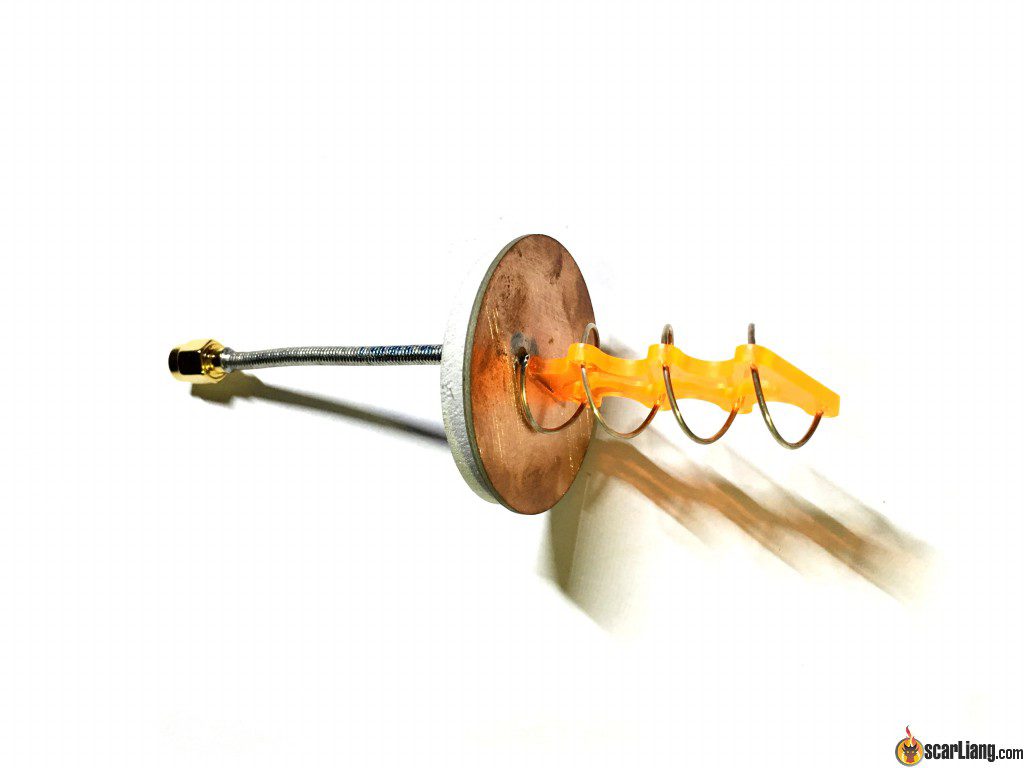
Summary:
- Type: Directional Circular
- Applications: Video receivers
The helical antenna, characterized by coil turns, excels in reducing multipath interference. Its gain is determined by the number of coil turns, offering flexible performance tuning by adjusting coil numbers. While many turns enhance range, efficiency wanes past 15 turns, offering little added gain.
Example: a 7-turn 5.8GHz 12dbi Helical antenna.
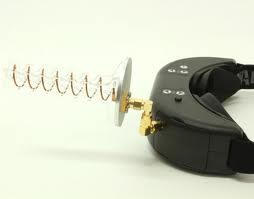
Patch antenna
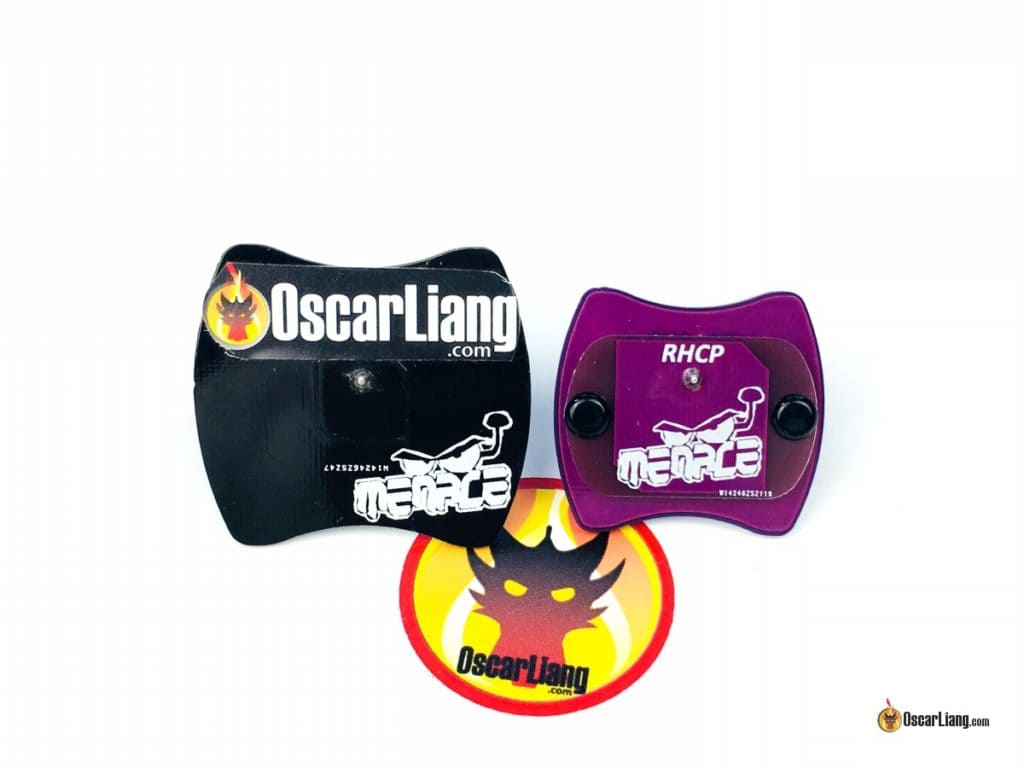
Summary:
- Type: Directional Linear or Circular
- Applications: Radio control transmitters and video receivers
Patch antennas, packaged as compact printed circuit boards, offer directional capabilities in both linear and circular polarizations.
While economically manufactured due to their circuit board nature, their efficiency lags behind other antenna types relying on air as dielectric materials, like the helical antenna.
Patch antennas generally offer less directionality with a more compact design compared to helical counterparts.
Example of patch antenna internal structure.
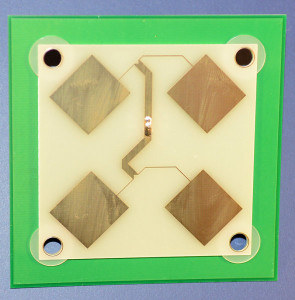
Crosshair antenna
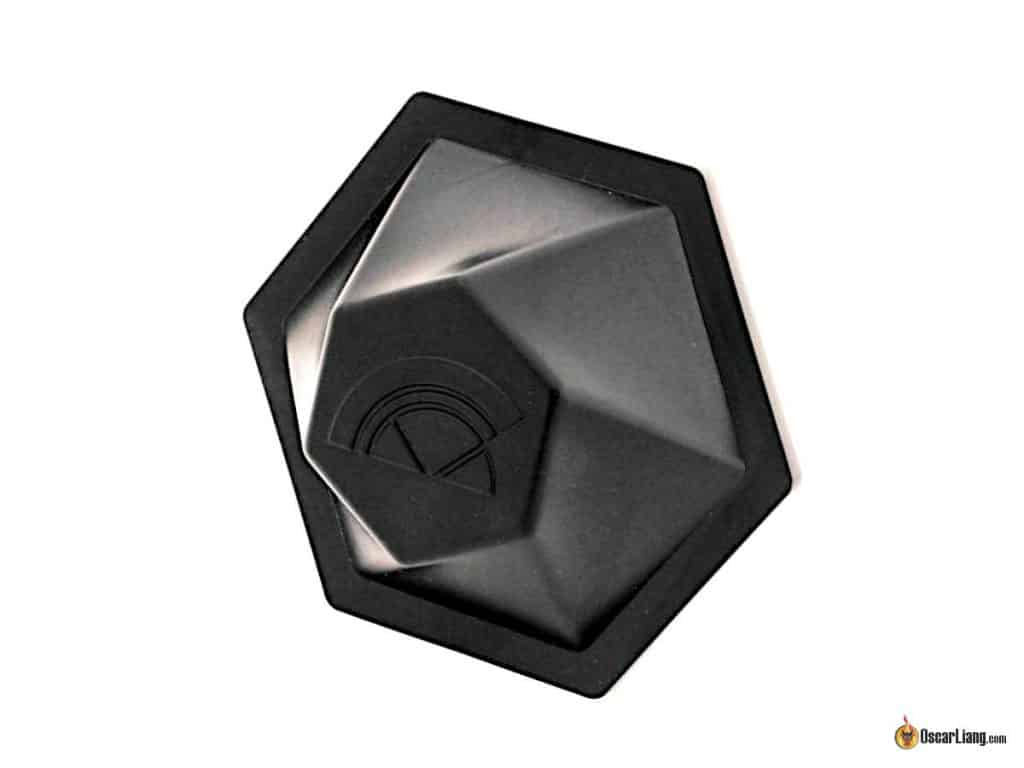
Summary:
- Type: Directional Circular
- Applications: Video receivers
The crosshair antenna features an active element distanced from a massive backplate, separated by an air gap dielectric, providing enhanced efficiency compared to patch antennas with fiberglass dielectrics.
Considerations in Choosing Antenna for FPV
For beginners, omni-directional circularly polarized antennas ensure comprehensive signal coverage.
A top-tier antenna often demands superior material and precision, but exorbitant prices may yield marginal range enhancements. Frequently, high-quality antennas can double the price yet deliver only a slight range increase.
The axial ratio is a crucial factor, often omitted in product listings but easily found through online reviews, influencing antenna choice.
Ultimately, selecting the best antenna revolves around balancing budget and thorough product research.
Combining an omni-directional with a directional antenna in diversity receivers enriches signal quality and range.
Receiver Antennas vs. Transmitter Antennas
Antennas are tailored for receiving, transmitting, or both functions. Selecting suitable antennas for each purpose is essential.
Omni-directional antennas on the video transmitter ensure reliable reception regardless of drone movement or orientation, as maintaining directional focus is impossible in flight.
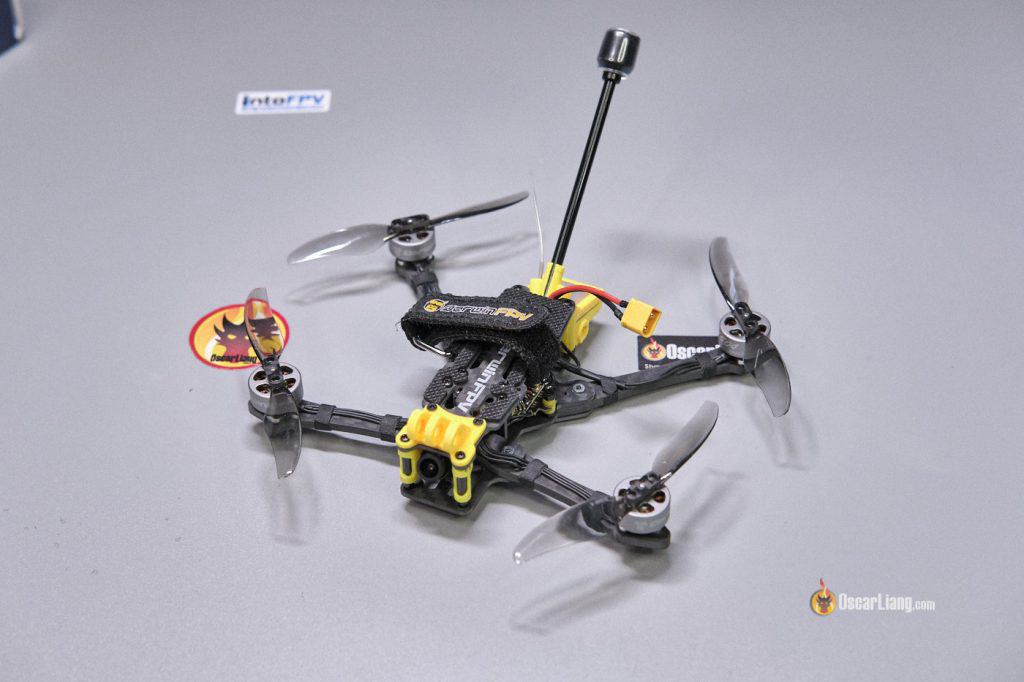
Highly directional antennas thrive on video receivers when correctly aligned. In diversity setups, combining omni-directional and directional antennas provides comprehensive coverage.
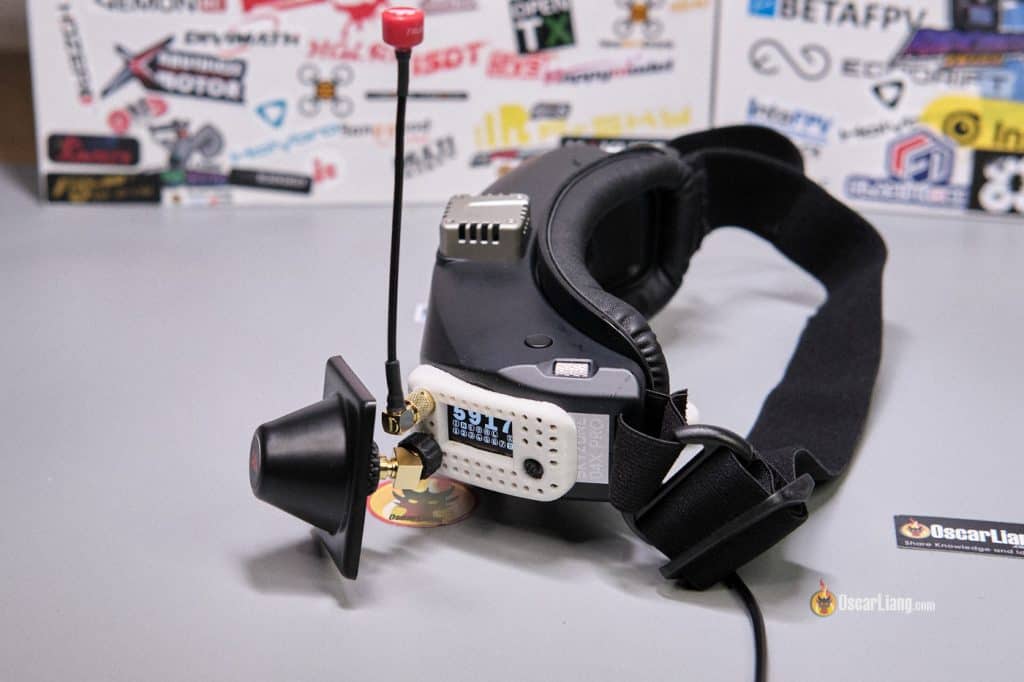
Antenna Connector Types
SMA and RP-SMA are prominent antenna connectors, incompatible by design, ensuring correct type matching is crucial. Performance does not differ between SMA and RP-SMA.
SMA connectors come in two variants: standard SMA and RP-SMA, each differing in design without affecting performance.
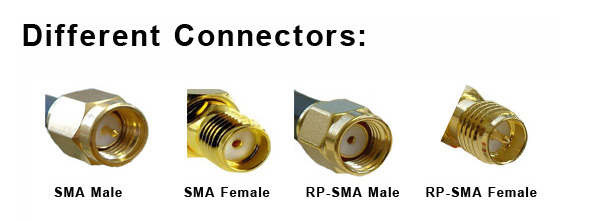
“U.FL” connectors are gaining popularity for their lightweight, compact design, despite being fragile and cycling limitedly.
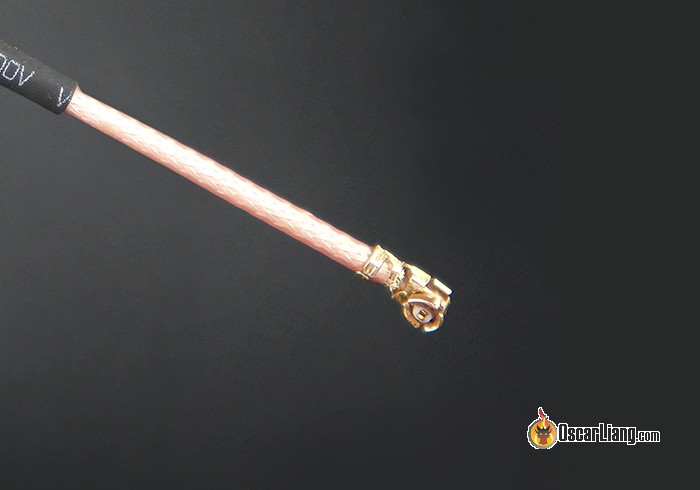
MMCX, a new connector type gaining traction in VTX and antennas, strikes a balance between SMA and U.FL, offering strength and better cycling performance while maintaining a compact size.
MMCX’s balanced attributes position it as a preferred choice due to enhanced robustness, mating cycles, and compact form compared to U.FL and SMA connectors.
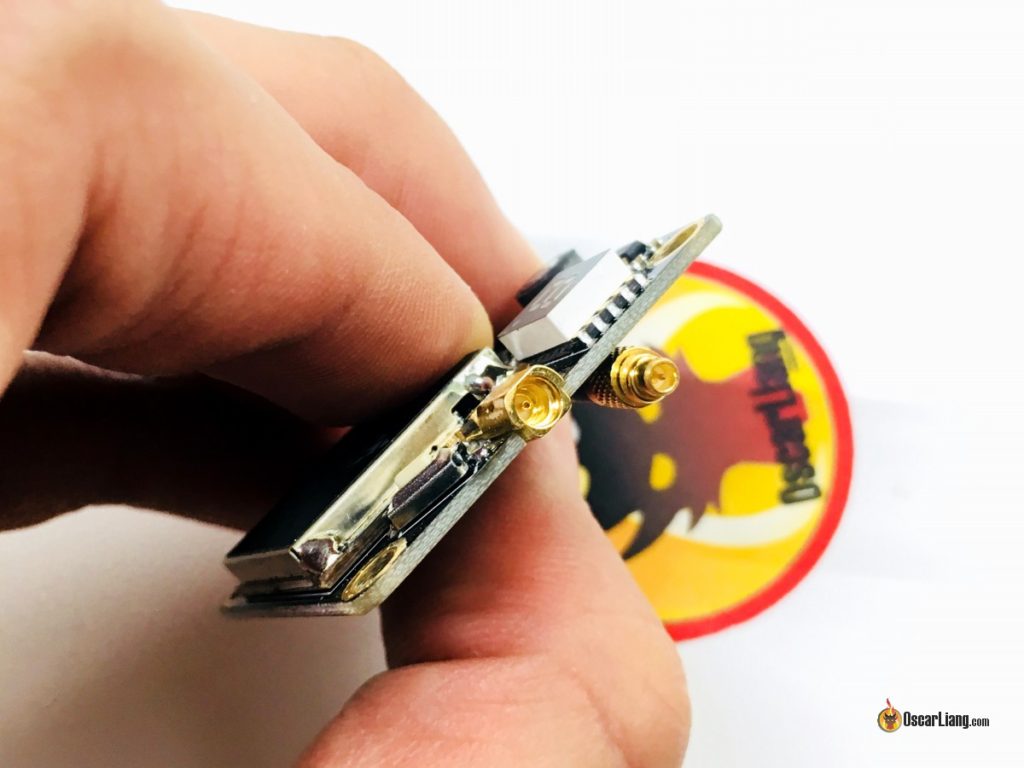
Durability
Durability is vital when selecting an FPV antenna for drones, given the antenna’s exposure and likelihood of damage during flights. Choosing a robust, sturdy housing ensures resilience against inevitable mishaps, making durability a key consideration, especially for frequent crashers.
Weight
Antenna size and weight, frequently overlooked, are critical factors with FPV drones becoming lighter. Conserving just a few grams can boost quad performance and flight duration, making weight a pivotal consideration in antenna selection for mini quads.
How to Mount VTX Antenna?
Mounting the VTX antenna demands keeping it away from conductive materials, which can absorb or block radio waves, degrading signals.
Ensuring the antenna is rigid prevents vibrations during flights, ensuring optimal tuning and reducing any potential noise interference.
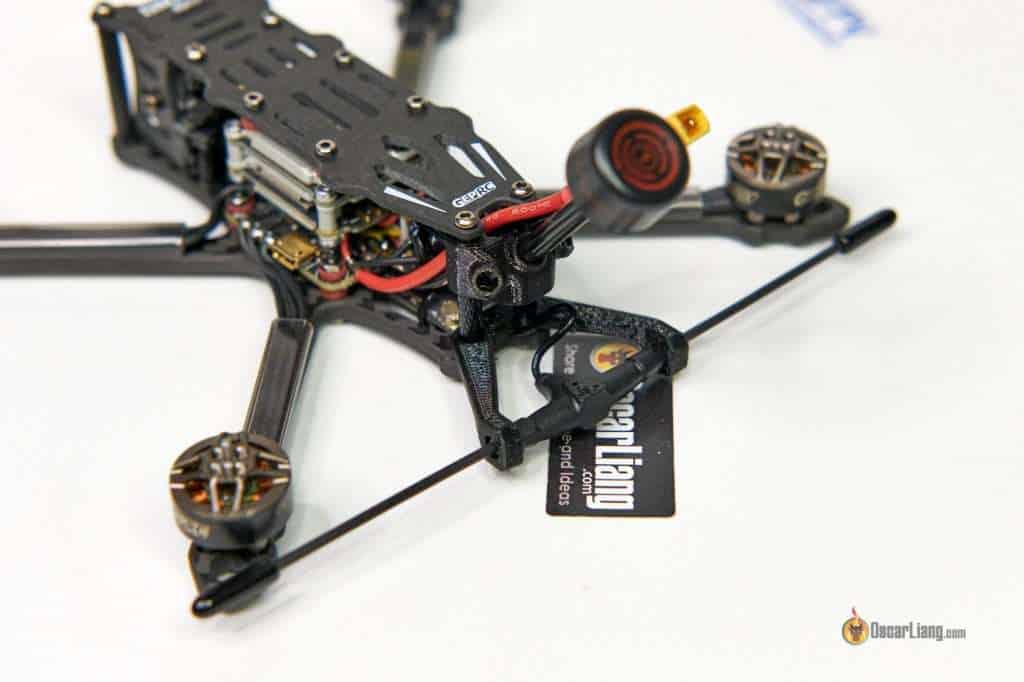
The VTX antenna’s optimal orientation aligns with your flying style. Tilting it back ensures a vertical position during flight, maximizing signal performance.
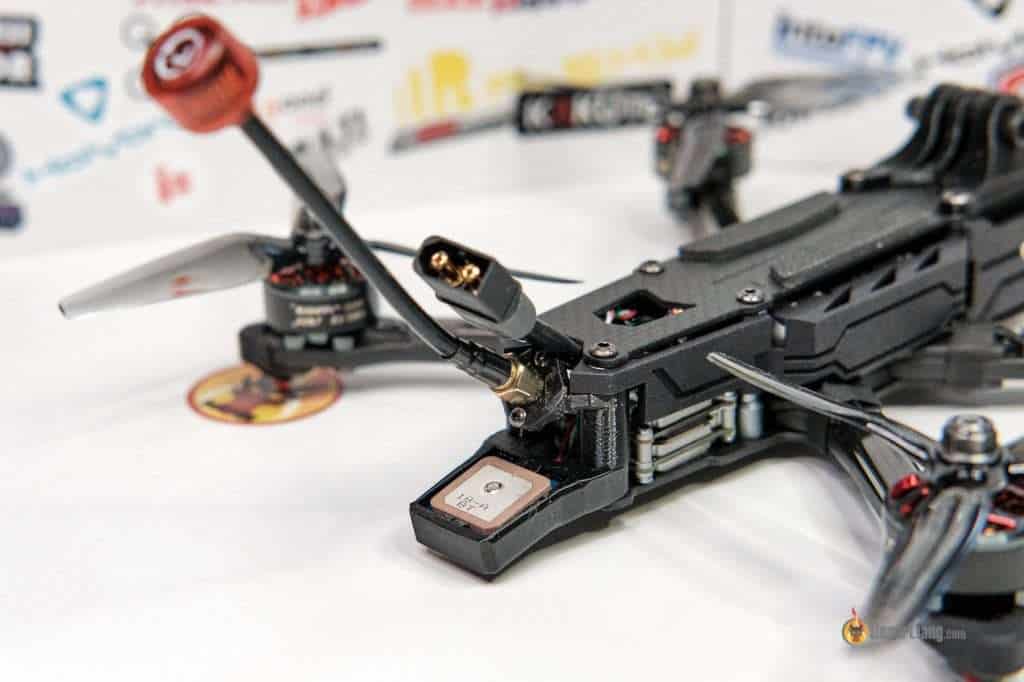
For racing drones, 3D printed TPU mounts offer robust VTX antenna protection, albeit not ideal for long-range flights.
How to Mount Video Receiver Antenna?
Mounting the video receiver antenna should consider setup types: circular polarized omni-directional antennas for single setups and diverse directional-omni antennas for enhanced performance and range in diversity setups.

Deploying a ground station with a patch antenna guards against unintended orientation shifts due to physical movement in long-range flights. Aiding a spotter to adjust antenna direction boosts signal acquisition, while moving goggles to align the patch antenna with the drone aids signal retention.
Using SMA Adapters
Adapting connectors (RP-SMA, SMA, MMCX, U.FL) with adapters, available in 45 or 90-degree angles, aids strategic antenna positioning. However, expect some signal loss: straight adapters incur 0.1-0.2dB loss, 45-degree adapters hold 0.2-0.5dB, and 90-degree adapters around 0.5-1dB.
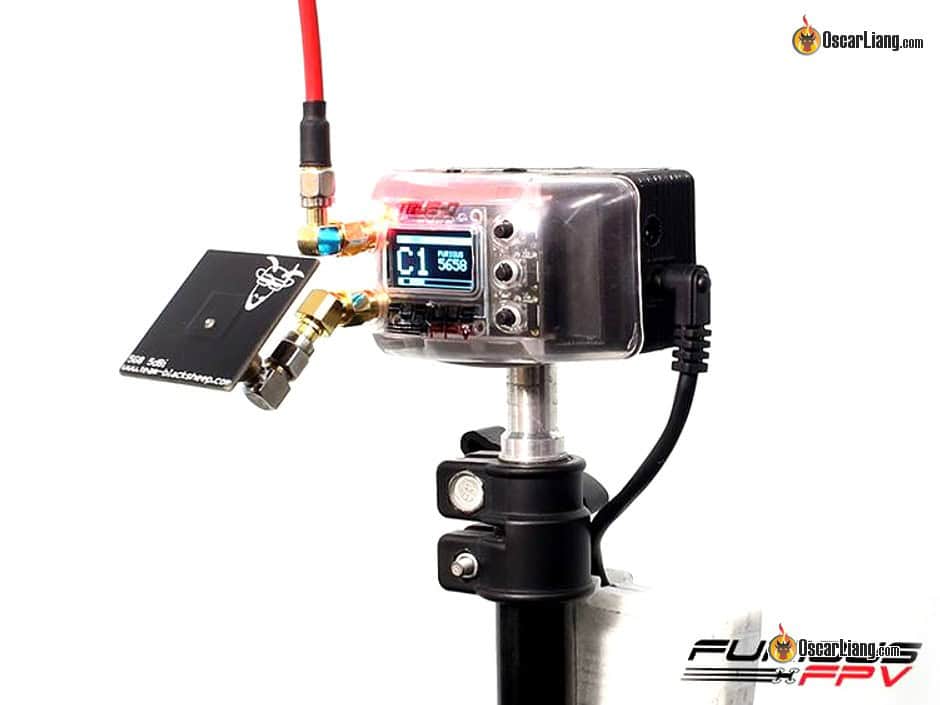
Despite minor losses, using adapters or extensions can be advantageous in distancing VTX antennas from interference sources or optimizing receiver antenna orientations.
Avoid Bending Antenna Cable
Bending antenna cables, especially at sharp 90-degree angles, results in signal quality diminutions (over 0.3dB). Aim to keep cables straight, minimizing bending radius to optimize signal transmission.
Covering Antennas
Coverage practices, like racing-standard 3D printed parts or heat-shrink tubes, affect antenna performance, shifting tuned frequencies unpredictably with significant signal losses up to 2dB. Protecting antennas may sacrifice signal quality; avoiding coverage ensures signal strength prioritizes over protection.
DIY FPV Antenna
DIY FPV antennas offer a cost-effective option. With accessible materials and simple construction methodologies, creating effective DIY antennas involves precise measurements and component assembly without intricate design knowledge.
Exploring RG402 cables can yield suitable alternatives for FPV over RG316 due to their reduced losses. Always ensure cables align with intended frequency applications to avoid undesirably lossy outcomes.
DIY antennas require precision for the finest results. Mistakes significantly impair performance, suggesting high-performers should instead opt for trusted antennas.
Conclusion
This comprehensive guide covers essential FPV antenna concepts, aiding informed selections and featuring antenna recommendations for diverse FPV activities. May this guide empower you to select the perfect FPV antenna, elevating your flying experiences!

All about Drones

